Expectations Rise After Big Teamster Wins at UPS
UPS rank and filers reflect on the gains made at the table—and what they hope for in the future.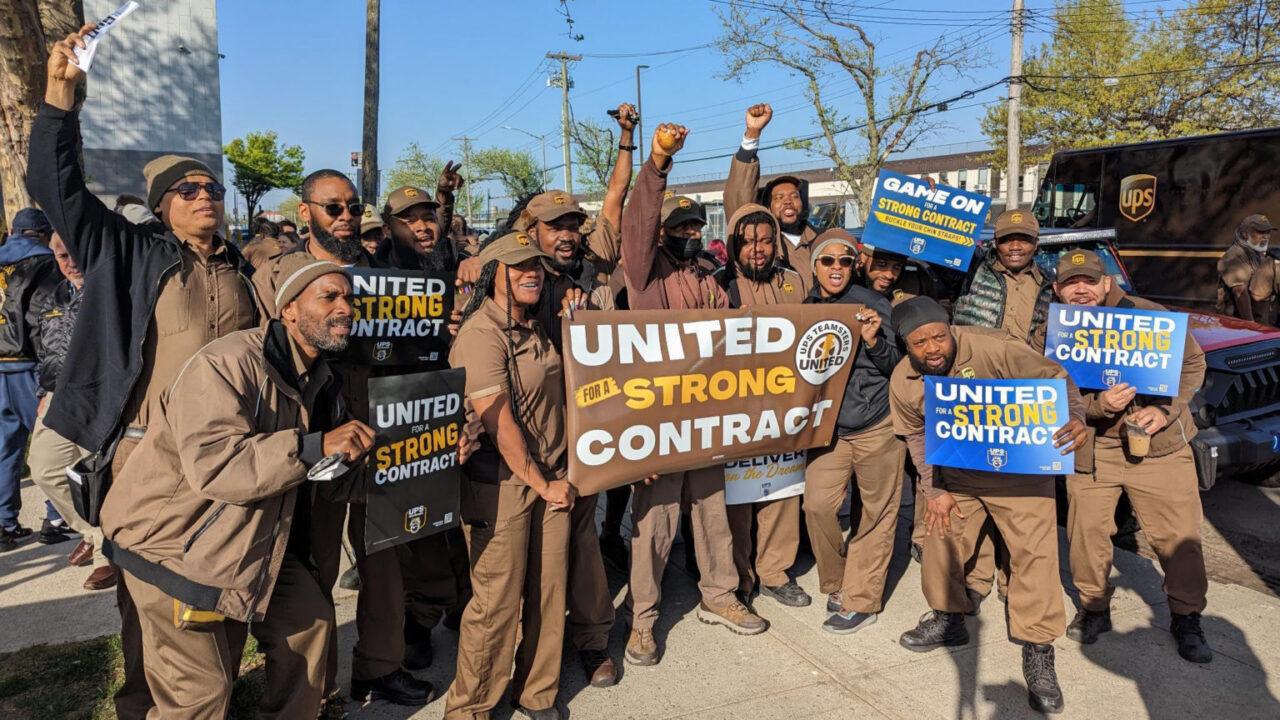 UPS Teamsters from Local 804 In Canarsie, Brooklyn by People's Dispatch / CC BY-SA 3.0
UPS Teamsters from Local 804 In Canarsie, Brooklyn by People's Dispatch / CC BY-SA 3.0
Some 323,000 U.S. workers have struck so far this year. Another 340,000 were in gear to strike, until their nationwide mobilization forced the company to concede. UPS Teamsters are voting on the deal through August 22.
“After 25 years of [former Teamsters President James P.] Hoffa and his givebacks, we came out ahead,” said Eugene Braswell, a delivery driver and Local 804 steward. “This is the first time in all those years that I have a national contract that I can vote yes on.”
How are UPSers making sense of their gains at the table? I spoke with two dozen rank and filers. Some were relieved they didn’t have to strike. Others had been excited for a strike—both to hit back at corporate management and to command respect from the supervisors who dish out daily abuse.
In the tentative deal, UPS Teamsters have won their biggest wage boost in decades: at least $7.50 an hour over five years for every current UPSer, and more for the lowest-paid. Even the 1997 strike only boosted part-time wages 50 cents (equivalent to 95 cents today) over five years.
The agreement would also end the forced sixth workday for drivers, create 7,500 new full-time inside jobs, and eliminate the second tier of drivers—reversing the infamous concession in the 2018 contract.
This will be Braswell’s final contract before he retires—after putting in many years of work helping build the reform movement that made it possible. “The company should be on notice now: no more cost-neutral contracts,” he said. “When we come to the table they should expect that if the company’s doing well, we deserve to do well also.”
In certain high cost-of-living areas including Chicago, Portland, Seattle, Minneapolis, Philadelphia, and San Francisco, UPS boosts pay with market-rate adjustments.
But it’s clear the organizing over the past year has encouraged members to set their sights higher than ever before. While longtime activists like Braswell see this deal as a sea change, there are also some, especially newer Teamsters, who are looking at what the union won without a strike and concluding it should have demanded even more. Members are already brainstorming higher demands for the next contract fight.
“If we’re seeing workers debate whether the best tentative agreement they’ve seen in decades—better even than one won through a strike [in 1997]—is acceptable, then that’s a good thing,” said delivery driver Sean Orr, a Local 705 steward and co-chair of the rank-and-file movement Teamsters for a Democratic Union (TDU).
“It’s good for our union, the labor movement, and all working people. It means that workers have higher expectations than ever in their lives, and aren’t willing to settle for less.”
Negotiations broke down in July over part-time pay, before the looming strike deadline forced UPS back to the table. Currently part-timers start at $15.50.
Under the tentative agreement, the starting rate for new hires will rise to $21 right away, and $23 by the end of the contract—an overall increase of $7.50 an hour from the current level.
Existing workers, part-time and full-time, will also get a raise of at least $7.50 over the five-year contract. It’s front-loaded, starting with an immediate raise of $2.75 or up to $21, whichever is more, so the lowest-paid workers will get more than $7.50. There’s an additional longevity raise for those with five, 10, or 15 years in.
In certain high cost-of-living areas including Chicago, Portland, Seattle, Minneapolis, Philadelphia, and San Francisco, UPS boosts pay with market-rate adjustments, in some cases as high as $23. The tentative deal adds the raises for current workers on top of any existing MRAs.
Citing concerns that the language isn’t clear enough to prevent UPS from taking the MRAs away, Local 89 in Louisville, Kentucky, was the only local whose representatives voted against endorsing the tentative agreement. The local leadership has since reversed itself, saying those concerns are assuaged, and recommends a yes vote.
Nathan Olney hired in as a preloader in Spokane, Washington, at $17 an hour under a market rate adjustment, then dropped to $15.50 in February 2022. He stayed on because he wanted to make UPS a career—but it wasn’t easy. “I lost 45 pounds my first month on the preload just because of the intensity of the workload,” he said.
Olney’s last job was in insurance, so he has a mind for contract details. His top priority going into bargaining was part-time wages. In the tentative deal, “the wages are not as high as I wanted to see for our part-timers,” said Olney, who is now a backup feeder driver. “But it’s a huge step in the right direction. I would have preferred to see a starting range closer to $24 with a progression to upwards of $27 or $28 an hour by the end of the contract.”
Still, after poring over old UPS pacts, his assessment is, “This is the biggest raise that any UPS contract has ever had, by a large margin.”
In the next contract cycle, he’d like to push for equal pay. “Up until the 1981 contract, all part-timers and full-timers made the exact same rate,” he said, “and adjusted for inflation, that is basically the rate that drivers make today. I really wish we could get back to that.”
“We have to keep in mind not only that this separation between part-time and full-time has existed for 41 years now, but it grew worse over time,” said Barry Eidlin, a sociologist at McGill University and a former TDU organizer.
He points out the starting wage for part-timers increased by just $7.50 over the last 41 years, from $8 in 1982 to $15.50 today. “With the current tentative agreement under consideration, the part-time starting wage will go up another $7.50 an hour in five years.”
“Having longevity raises in the contract for part-timers for the first time is very significant,” said Corey Levesque, who started as a part-timer at $9.50 and didn’t see a raise for eight years. “One thing I’m telling part-timers is, this is a building block. Now that we have longevity raises in the contract, we could organize and make those higher in the next contract.”
Grueling hours were compounded by the weight of heavier packages, as customers set up home offices and home gyms.
After 25 years of “dormant leadership“ at the top of the union, “you can’t undo all the wrongs overnight, ” said Levesque, now a delivery driver and steward in Local 251 in Rhode Island.
But he estimates nine out of 10 people in his hub are enthusiastic about the deal. “Overall I think it’s pretty damn good.”
UPSers across the workforce are passionate about another issue that’s not so straightforward to fix in bargaining: the company’s routine disrespect and abuse of workers, manifested as surveillance, speed-up, yelling, threats, and discipline.
“Our members, they really want revenge for what UPS has done to them,” said Richard Hooker, principal officer of Local 623 in Philadelphia, interviewed on Georgia Teamster David Allen’s YouTube channel. “They want something more than money can give them.”
Part-timer Misty Baker, a steward in Lexington, Kentucky, favors the agreement. But “I would forfeit any pay raise to stop the harassment and the nonsense and be able to go to work and do my job and be left alone and go home,” she said.
“My supervisor is tracking me,” Baker said. “He’s making the case against me for stealing time. You go to the bathroom, you come out, they’re standing there: ‘What are you doing?’ What do you think I was doing?”
Harassment was already a top concern—and then Covid came along, throwing into relief how little regard the company had for workers’ well-being.
“I can still vividly remember getting my drivers together outside the building when the pandemic first started and the fear on their faces that somehow they could bring the virus to their children,” said delivery driver Greg Kerwood, a steward in Somerville, Massachusetts.
Meanwhile the company was thinking, “We’re going to squeeze this for all the profit we can,” he said. “And if we lose some people along the way, who cares? We’ll replace them with someone else.”
Grueling hours were compounded by the weight of heavier packages, as customers set up home offices and home gyms. “It was just all day every day, furniture and tables and desks and weight sets,” Kerwood said. “I can remember walking into my house on a Friday night and literally just collapsing in the middle of the living room and not moving for hours… Just the sheer indifference to the humanity of the workers.”
He believes a strike would have sent managers an unmistakable message that workers would no longer tolerate mistreatment.
“Part of what happened when people got out there with the practice pickets was they started to feel a sense of their own power,” Kerwood said. “The shackles were beginning to break. And they were starting to stand up and hold their shoulders straight and put their heads high and start to take some pride in their own self-respect in the workplace.”
Another major issue for drivers was forced overtime.
Driver Gage Lacharite of Local 79 in Tampa is most excited that this contract eliminates the second tier of drivers, known as 22.4s. “They tried to sell it as, ‘22.4s are going to work in the warehouse sometimes and then they’re gonna drive sometimes,’” he said, “but in reality it was just driving all the time for lower pay.”
Under the tentative agreement, all those drivers will be immediately converted into regular delivery drivers. “I was amazed we actually got it,” Braswell said. “Once you give away a tier, it’s hard to get those back.”
Another major issue for drivers was forced overtime. On this too, the deal contains a big step forward: no driver can be forced to work a sixth day in a week. “I never thought I would see that,” Levesque said.
“My biggest issue was the forced sixth-day punch,” said steward and delivery driver Tyler Condo in Denver. “I’ve been working my ass off.”
Condo started at UPS three years ago as a personal vehicle driver—part of a contingent workforce of temps without benefits who deliver packages from their own cars during the busy season Uber-style. The deal limits this outsourcing to five weeks of the year, and gives part-timers priority access to those jobs.
Condo is “pretty satisfied” with the tentative agreement. He cited a $1,000 increase in the monthly pension payout for 60,000 Teamsters in the Central and Southern regions: “I know that all of these guys that are about to retire have really built this company to be what it is today.”
The deal also increases the financial penalty the employer will pay on excessive forced daily overtime; 10- and 11-hour days are normal. But UPS routinely pays out these penalties and persists in violating the contract.
“The battle at UPS is about power,” Kerwood said. “The company has gobs of money, and they have no problem throwing that money at a contract or at a grievance as long as they can maintain control.”
Under the existing language, delivery drivers have the chance to sign onto the “9.5 list,” which allows them to grieve for penalty pay if they’re made to work more than 9.5 hours three times in a week. In some UPS centers, many drivers are on the list, stewards routinely grieve excess overtime, and drivers get big penalty checks. But none of that gives you back your time.
“What we want up here is practices to change,” said Andy Groat, a delivery driver in Sandpoint, Idaho. “We want to use the grievance process not as a way to make extra money but as a way to be heard and have core business practices change.”
In Williston, Vermont, the hub is so understaffed that “we actually have drivers going in for extra work and helping on the preload,” said driver and steward Steve Dumont. “Overall, I think it’s a good contract,” he said, but he’s worried that even with increased penalties, UPS will exploit every loophole.
In Presque Isle, Maine, delivery driver and steward Lendell Buckingham says the international ran a great contract campaign. Now the challenge will be for workers to enforce the contract wins—because “they’ve seen the company walk on them for years,” he said, “and it just doesn’t seem to ever be strong enough language to stop the company from forcing overtime on us.”
Beyond the core activist layer of the union, though, the sentiment in favor of striking wasn’t as broadly shared as it might appear on social media.
Christopher Paiva, a Local 639 steward in Maryland, thinks that shift in power would have come from a strike.
“A lot of people were eager to stick it to UPS to show them that we are worth something. I myself was a little eager for it,” he said, days after his baby girl was born. “I definitely put money away for it… Everybody really got behind the campaign because we were going to hold UPS accountable for the abuse.”
“If we had gone on strike for five days and came back with this contract, I think people would feel very different about it, even if it was exactly the same,” Kerwood said. “[Not striking] changes the pronouns from we as a union to you as a leadership. We did this. We fought for it. We won.”
UPS preloader Simon Roe in Tampa, Florida, was ready to strike, too. “People were talking about bringing out the grill to have a big cookout on the picket line,” they said. “I was getting emails from random companies about what a potential UPS strike would mean. If regular businesses and regular people were asking me about it and getting scared, then UPS was definitely scared.”
Roe’s top issue was part-time wages; they currently earn $16.65 an hour. “We got as much as we could without going on strike, but obviously, who knows what we could have gotten if we had gone on strike?” they said. “We deserve the stars and the moon. But at this point, we got a pretty good contract compared to every single one we’ve had before.”
Beyond the core activist layer of the union, though, the sentiment in favor of striking wasn’t as broadly shared as it might appear on social media.
“Striking would have been an absolute disaster,” said Baker. She worried about customers who rely on medication delivery, since FedEx and the Postal Service could only have absorbed a fraction of UPS’s package volume.
News of the tentative deal was also a relief to Groat and his co-workers in Idaho, who were concerned about layoffs after a strike.
“We’re happy to be behind a steering wheel, while the membership is processing what direction they’re going to vote over the next three weeks,” Groat said. “We would prefer not to strike. We would prefer to work in and within this contract and continue to gain momentum moving forward for the next contract.”
The tentative deal will put air conditioning on one-third of the delivery fleet by the end of five years, with the hottest parts of the country getting first dibs. Existing trucks will be retrofitted with two new fans in the cab, induction vents to pull hot air out of the cargo area, and heat shields to cool the cab floor by insulating it from the engine.
The other unifying theme is training up a network of shop floor leaders to go toe to toe with management to enforce the contract.
Tampa is in one of the priority zones for air conditioning. But “I’m super excited for the ventilation system in the back,” Lacharite said. “That’s an even bigger deal, as it gets really hot in there.”
A Local 804 delivery driver I met in Queens, New York, was more skeptical how much difference the heat relief measures will make. He didn’t want his name used, but he let me lean into his cab to see two metal fans already mounted above the driver’s seat.
“It’s metal,” he said. “It’s going to get as hot as the truck and blow hot air. They’re off. I don’t even bother with them.”
No unifying issue has emerged among those dissatisfied. Some argue the union should have held out for the demand for a $25 minimum for newly hired part-timers. Then again, “you have some people that feel like the gap between them and newer people needs to be higher,” said part-timer Damian Kungle in Canton, Ohio. “Other people don’t care about that but think the $1.50 [longevity boost] as a catch-up raise was insulting and not enough.”
“The fact that some people are unhappy that the tentative agreement didn’t get a $25 minimum for part-timers or some other things really speaks to the new mood of militancy in parts of the labor movement,” said John Logan, a professor of labor studies at San Francisco State University.
“By any recent standard, it’s a great contract. As you know, since the Great Recession (and for a couple decades preceding it, but especially since then) part-time poverty and expendable workers has been the business model of far too much of corporate America. The UPS contract really does challenge this model.”
UPS Teamster activists are already thinking about their next organizing goals. Many are interested in helping Amazon workers unionize. “Make every Teamster an organizer should be our goal,” said Elbe Lieb, a part-timer from Local 135 in Indiana.
The other unifying theme is training up a network of shop floor leaders to go toe to toe with management to enforce the contract. “I’m going to keep trying to bring people together, educate them,” said Paiva, “and not make it just one activist in the building or local, but create a foundation, so everyone can look out and defend themselves and the person next to them.”
Fired up by the practice pickets, UPSers outside Boston last month backed off an abusive supervisor with a shop floor action—they all turned their backs on him during a morning briefing. Coming off the contract campaign, there’s plenty of new energy for this kind of activity, which is what it will take to translate many of the wins from paper to reality.
Amazon workers are already taking note of the wage gains and demanding wage parity with UPS Teamsters. Next they’ll see union democracy in action when the voting concludes August 22.
Your support is crucial...As we navigate an uncertain 2025, with a new administration questioning press freedoms, the risks are clear: our ability to report freely is under threat.
Your tax-deductible donation enables us to dig deeper, delivering fearless investigative reporting and analysis that exposes the reality beneath the headlines — without compromise.
Now is the time to take action. Stand with our courageous journalists. Donate today to protect a free press, uphold democracy and uncover the stories that need to be told.

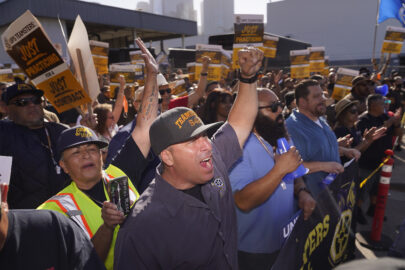
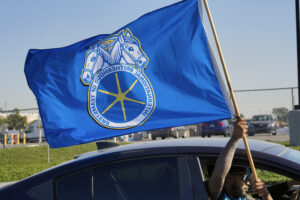



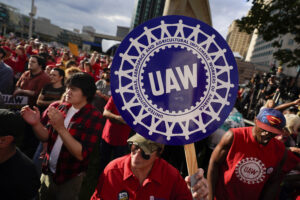
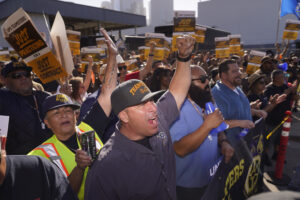
You need to be a supporter to comment.
There are currently no responses to this article.
Be the first to respond.